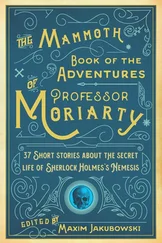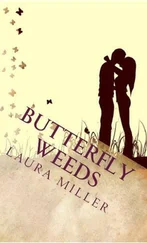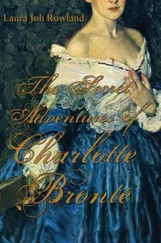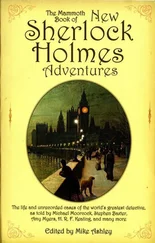Ostensibly, Lewis chose the priest in this standoff, but he was a great fan of Puck of Pook’s Hill, too. Half his heart, and much of Narnia, would always belong to the woods and the road that runs through them.
Chapter Twenty-six
A Formula of Power over Living Men
Stories leave themselves open to a much wider spectrum of interpretation than theology does. As the Iranian academic and writer Azar Nafisi, author of Reading Lolita in Tehran, once observed, “Stories are wayward. They never remain within the control even of their own creators.” This is a problem for the orthodox, but Lewis felt that certain important truths could be fully communicated only via stories. What was captured, or was meant to be captured, was ineffable. “To be stories at all,” Lewis wrote, “they must be series of events; but it must be understood that this series — the plot, as we call it — is only really a net whereby to catch something else. The real theme may be, and perhaps usually is, something that has no sequence in it, something other than a process and much more like [a] state or quality.”
Everyone is available, is susceptible, to the spell of story. That is one reason critics have generally found it unworthy of study; Lewis observed that the more story predominates in a book, the less intellectuals think of it. The appetite for and appreciation of story requires no training or cultivation; it is a common denominator lower even than titillating descriptions of sex, because children are usually not very interested in those. But it is potent. The word “spell,” as Tolkien mentions in his essay “On Fairy Stories,” once meant “both a story told, and a formula of power over living men.” Where does this power come from and what is it made of? Tolkien thought that to ask this question was to speculate about the very origins of language and the mind.
Not long ago, I heard an ornithologist on the radio, explaining that for birds, singing is a learned behavior. Young larks, for example, listen to adult larks sing and then practice until they perfect the skill. The scientist then played recordings of two birds singing to illustrate his point. The mature lark ran confidently through a succession of repeating, fully developed motifs, while the youngster’s song skittered around, jumbling together fragments of different songs in patterns that didn’t resolve. The ornithologist called this “babbling,” and to illustrate his point further, he played a recording of his own eighteen-month-old daughter babbling in baby talk, that is, making sounds that approximated language without quite being language. Human children, it seems, learn to speak in much the same way that birds learn to sing. The ornithologist’s daughter rattled off a series of nonsense syllables, mimicking the inflections of adult speech, occasionally tossing in familiar phrases from nursery rhymes: “Wee, wee, wee, all the way home.”
When my friends Desmond and Corinne were learning to talk, they too went through a babbling phase. Corinne is a particularly canny impressionist, and before she could command many useful real words, she would fix a nearby adult with a confiding look and chatter in her pretend language, perfectly reproducing the cadences of real conversation. Eventually, after she acquired more words, she and her brother learned how to use and arrange them properly: “this” for an object close at hand; “that” for the thing on the other side of the room you want the grown-up to bring to you. For a while, they both stopped answering yes-or-no questions with a “yes” or a “no” and responded only in full sentences: “Did you like the circus?” “I did.” “Is the Cat in the Hat making a mess?” “He is!” It was as if, having finally sussed out a few of the occult powers of grammar, they wanted to exercise them as often as possible.
Now that the twins are three, they seem to be practicing another kind of grammar. Just as they absorb the words they hear every day and learn to make sense of the patterns they form, so they are soaking up stories. Corinne has begun to spin out what I think of as story babble, buttonholing sympathetic adults à la Coleridge’s Ancient Mariner, and treating them to endless, rambling narratives that all seem to run together into a single infinite saga. (Since Corinne’s nickname is Nini, her parents call this epic the Niniad.) Her characters are lifted from Beatrix Potter and Dr. Seuss, from the people and animals in her world and from the figures that populate the imaginary life she has built with her brother. At present, these characters don’t do much more than eat, hide, and throw things out the window, but every so often, a shard of fully formed story language pops into the narrative. A turtle and a tadpole will be engaged in a perpetual cycle of looking for food and dodging the predatory “big fish” when suddenly “the moon came up and shone on the quiet fields of snow and they got into their warm, soft beds and fell fast asleep.”
Whenever Corinne summons one of these fragments of story talk, she lowers her voice and slips into a hushed, singsong rhythm that is, of course, her imitation of the special voice that adults use when reading or telling a story to children. In my experience, there is no better way to seize the attention of distracted children than to start speaking in this voice. They will drop the fought-over stuffed animal or the annoying toy drum and drift over to your knee with the faces of the hypnotized — attentive and pliable as long as you keep it coming. It is the kind of power that can go to your head.
Adults don’t become immune to this power, either; they just learn to respond to different cues. Instead of “Once upon a time,” we latch onto “It is a truth universally acknowledged, that a single man in possession of a good fortune, must be in want of a wife,” perhaps the most famous first sentence in the history of the English novel. Equally effective is the grand, sweeping, and old-fashioned “It was the best of times, it was the worst of times,” from Dickens’s Tale of Two Cities. Or we might acquire a taste for laconic leaps into the middle of the action, such as Mickey Spillane’s opener for I, the Jury: “I shook the rain from my hat and walked into the room.” A simple, even mundane sentence, that one, but it does the trick; it makes you wonder what happens next. You’re hooked.
Who can catalog the myriad ways that human beings use to signal, “Now, I am telling you a story”? The speaker leaves off ordinary talk, the listener recalibrates her attention, and both enter into a relationship older than the memory of our race. A story takes us, for a while, out of time and the particularities of our own existence. The initiation into this ritual might come as a pause, a change of tone, or even as the apparition of a studio logo shining on the screen in a darkened movie theater. This tells us that a special kind of language, the language of story, has begun.
Human beings speak thousands of languages, but most linguists agree with the theory, first advanced by Noam Chomsky, that there is a “universal grammar,” a common structural basis underlying all human languages. Despite the great variety of tongues, they all work in the same fundamental way. Our brains, it is thought, have an innate response to languages that employ this structure and we are particularly attuned to it during childhood, when we learn languages quickly and easily. An infant’s babbling sounds like adorable nonsense, but it’s really the evidence of a powerful information processor assembling itself, rifling through sounds and sequences of sounds and figuring how all the pieces fit together to form meanings.
Could stories work the same way? Could Corinne, when she corners me and launches into yet another installment of the Niniad, be practicing the grammar of storytelling, arranging and rearranging the components, trying out different kinds of voices, experimenting with repetitions, with dramatic conflict and its resolution, if not yet, alas, with endings? I think so. But while everyone learns to speak, not everyone learns how to tell stories, or at least not how to tell them successfully.
Читать дальше












